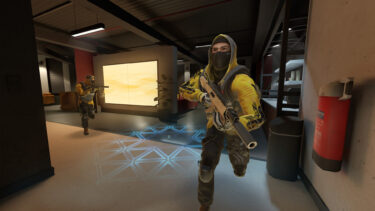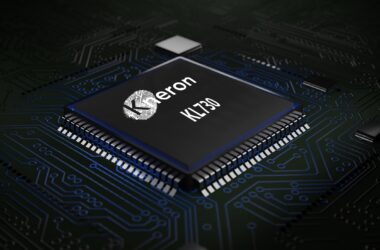
In recent years, the digital media landscape has buzzed with a term seemingly plucked from science fiction: deepfakes. We are well beyond the cartoon cut-out animations of JibJab ecards of 2004—the state of the art in audio and visual recreations of real people are so realistic that distinguishing fabricated content from genuine footage is increasingly difficult.
As with using any tool, intent matters. While deepfakes are frequently cited as a threat to government, business, and celebrities, swapping or changing faces in videos is not necessarily nefarious. Perhaps it’s art. Perhaps it’s fun.
It’s not necessarily easy to do, either. Numerous tools exist, but most are either complex or yield subpar results.
Enter FaceFusion. This tool offers seamless face fusion in videos, and stands out due to its accessibility, speed, and ability to produce realistic deepfakes. Gone are the days when digital artists had to laboriously map, match, or train a face swapper for each video. FaceFusion’s auto-detection feature instantly swaps faces, marrying user-friendliness with efficiency.
Skeptical? Here’s a video we created in mere minutes and with just a few simple clicks:
As the line between reality and digital creations becomes increasingly blurred, tools like FaceFusion ultimately call for a paradigm shift in our perception of digital content. You can’t always believe your own eyes. This article delves into FaceFusion, examining its features, installation process, and compatibility with both Windows and Mac platforms.
Background
One character inhabiting the visage of another has been a staple of storytelling for centuries. And the “deepfake” traces its origins back to early film and photography. Techniques to manipulate images and moving pictures have evolved along with technology, from the French film Eyes Without a Face in 1960 to Face/Off in 1997 to the Mission Impossible series.
This used to be a manual and labor-intensive process, and early deepfakes often suffered from misaligned features or glaring inconsistencies in lighting and texture. The introduction of neural networks and machine learning, however, catapulted this practice into a new era.
The term “deepfake”—a fusion of “deep learning” and “fake”—encapsulates this technology’s essence. Using deep learning algorithms, computers overlay images or videos onto existing source material.
As technology advanced, so too did the realism of deepfakes and the ease of creating them. New tools democratized the creation process, bringing the capability from Hollywood special effects shops to homes and offices.
Overview of FaceFusion
Designed specifically for video deepfakes, FaceFusion was created to empower everyday computer users to achieve results previously reserved for those with considerable computing power and expertise.
Key features of FaceFusion include:
Much of FaceFusion’s accuracy is attributed to the “insightface” algorithm, which automatically detects and replaces intricate facial features with precision, largely automating the process. (Those acquainted with deepfakes might recognize insightface as the engine behind Roop, a notable tool used for face-swapping in images, previously reviewed in depth by Decrypt.)
One initial limitation of insightface is its 128×128 default resolution, a limitation set by the developer for ethical reasons. Power users have circumvented this constraint, however, and further combined insightface with other face-enhancing algorithms like GPFGan or Codeformer. The FaceFusion developer has also integrated the “opennsfw” library, which prevents the generation of explicit content.
Putting everything together, users can refine the output to produce sharp, clear faces. This method not only improves quality but also significantly reduces processing time.
Installation Guide
Hardware requirements:
At a minimum, a GPU with 4GB of vRAM is required. However, for optimal results in a reasonable timeframe, 8GB is recommended.
Step-by-step installation guide:
Installing FaceFusion requires the use of various terminal commands, as there’s currently no GUI for installation. This is a summary of the official guide.
Windows:
Before installing FaceFusion, install Python 3.10, Git, Microsoft Visual C++ 2015 Redistributable, and Microsoft Visual Studio 2022 build tools. To do so, follow these steps:
Users with Nvidia Cards should also install the latest version of the CUDA toolkit from this URL and the cuDNN libraries from this URL.
Similar to Windows, Mac users must install several components before utilizing FaceFusion:
Note: If commands prefixed with python or pip fail, try using python3 or pip3 instead.
User Guide
In contrast to its command-line based installation, FaceFusion’s visual user interface is refreshingly intuitive:

How to use FaceFusion:
For those wanting to adjust parameters, here are some key definitions:
Tips for Optimal Results:
FaceFusion Review
In the world of deepfakes, FaceFusion genuinely eclipses many of its peers. After extensive testing, it’s clear that FaceFusion delivers. Its use of the insightface algorithm streamlines face-swapping, optimizing efficiency and user experience. Its ethical commitment to preventing NSFW content generation is also laudable.
From a user standpoint, the ability to operate locally is invaluable. In an age of heightened data privacy concerns, the independence from cloud-based resources is a welcome feature. However, future versions need to offer a more user-friendly GUI, especially for initial installation.
FaceFusion has raised overall expectations of deepfake technology, democratizing the creation process with ethical safeguards.
Strengths:
Weaknesses:
Now, why not transform yourself into a superhero or superstar? You might not be a CGI artist, but with FaceFusion, you’re very nearly one.
Source: Decrypt





